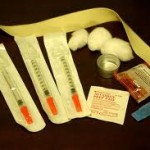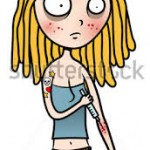The Harm Reduction Dilemma
The more I read about addiction studies in Canada and Sweden, the more frustrated I get about the way we handle heroin addicts here in our country.
 Can you imagine my husband graduated last year as a substance abuse counselor, but was never introduced to the term or concept of ‘chipper’? It’s hard to believe, but true.
Can you imagine my husband graduated last year as a substance abuse counselor, but was never introduced to the term or concept of ‘chipper’? It’s hard to believe, but true.
Can an addict be taught how to be a safe chipper? Can harm reduction be taught, and saves lives? Yes, yes, and yes, but that would require allowing the addict to actually use their drugs, and because of the moral stigma, and because it is highly illegal, this is just not done. Besides, I am sure that neither judges, nor parents, nor 12 steppers would want any addict to think there was even the slightest chance they could use drugs, yet hold a job, keep the family in tact, all the while avoiding stealing or getting strung out.
I am not advocating drug use. I am only looking at ways to keep addicts alive, with the best possible quality of life- meaning not in prison and not in rehab, and not sick with HIV or Hep C, or just plain drug sick.
 The clean needle exchange was revolutionary, but that is but the tip of the iceberg. Shouldn’t every addict carry the kit to revive himself in case he overdosed? How cruel to keep this life-saving tool in the closet. In Canada a group of addicts were given a chance to use heroin in a very controlled and regulated fashion, which immediately eliminated disease, overdose, and abscesses. Because the dose was controlled in a clean, safe, and sanitary environment, these addicts no longer got sick with a progressing addiction. A large majority of the group stabilized, and were able to integrate back into the family, and even hold jobs. When addicts no longer need to steal to use, we eliminate the crime that usually goes along with the rest of the damage report. All in all, the ‘experiment’ was a huge success, largely, I believe, because the substance was regulated, and the family supportive.
The clean needle exchange was revolutionary, but that is but the tip of the iceberg. Shouldn’t every addict carry the kit to revive himself in case he overdosed? How cruel to keep this life-saving tool in the closet. In Canada a group of addicts were given a chance to use heroin in a very controlled and regulated fashion, which immediately eliminated disease, overdose, and abscesses. Because the dose was controlled in a clean, safe, and sanitary environment, these addicts no longer got sick with a progressing addiction. A large majority of the group stabilized, and were able to integrate back into the family, and even hold jobs. When addicts no longer need to steal to use, we eliminate the crime that usually goes along with the rest of the damage report. All in all, the ‘experiment’ was a huge success, largely, I believe, because the substance was regulated, and the family supportive.
 I can tell you straight from the horse’s mouth that a hygienic and safe environment is paramount in avoiding diseases, abscesses and overdoses. When the user has the proper hygiene and equipment (including clean, sharp needles), good light, and is not rushed, the chance of diseases in ‘none’, the chance of abscess is ‘slim’, and the chance of overdose is ‘less’ because he has the time to carefully measure the dose and cook out the impurities thoroughly, and is less inclined to hog it down (after rationalizing he’s using ‘just this one last time’).
I can tell you straight from the horse’s mouth that a hygienic and safe environment is paramount in avoiding diseases, abscesses and overdoses. When the user has the proper hygiene and equipment (including clean, sharp needles), good light, and is not rushed, the chance of diseases in ‘none’, the chance of abscess is ‘slim’, and the chance of overdose is ‘less’ because he has the time to carefully measure the dose and cook out the impurities thoroughly, and is less inclined to hog it down (after rationalizing he’s using ‘just this one last time’).
But alas, we are here in the USA, doing things in an outdated puritanical fashion, that serves only the pocketbooks of the rehabs and criminal justice system. If you have a loved one who is an addict, and you are frustrated like me, here are a few natural things you can do, to help ease the addiction;
- Dowse to balance the addict and draw the addition out.
- Try Bach flower remedies such as Agrimony, Cherry Plum, Chestnut Bud or Crab Apple. Simply match up the traits you are addressing and choose the remedy that fits.
- Sai Sanjeevini has a series of prayer patterns for all manor of addictions. Free and effective, you can learn the system in about an hour, and download the patterns. www.saisanjeevini.org
- Homeopathy has been successfully used to treat addiction, and you can either consult a professional, or dowse for the best remedy.
- Although counseling can usually benefit, words are not enough, and consider this to be but a piece of the healing puzzle.
There is no quick fix, but you can strip off the layers, like peeling an onion, and reduce some of the pain and anxiety that plagues the addict, by eclectically employing an array of healing modalities, to restore health and balance.




